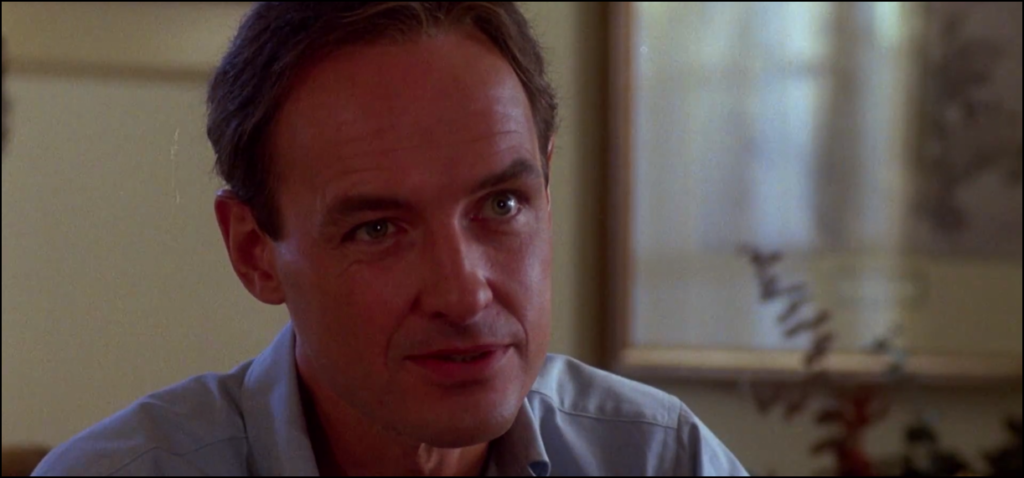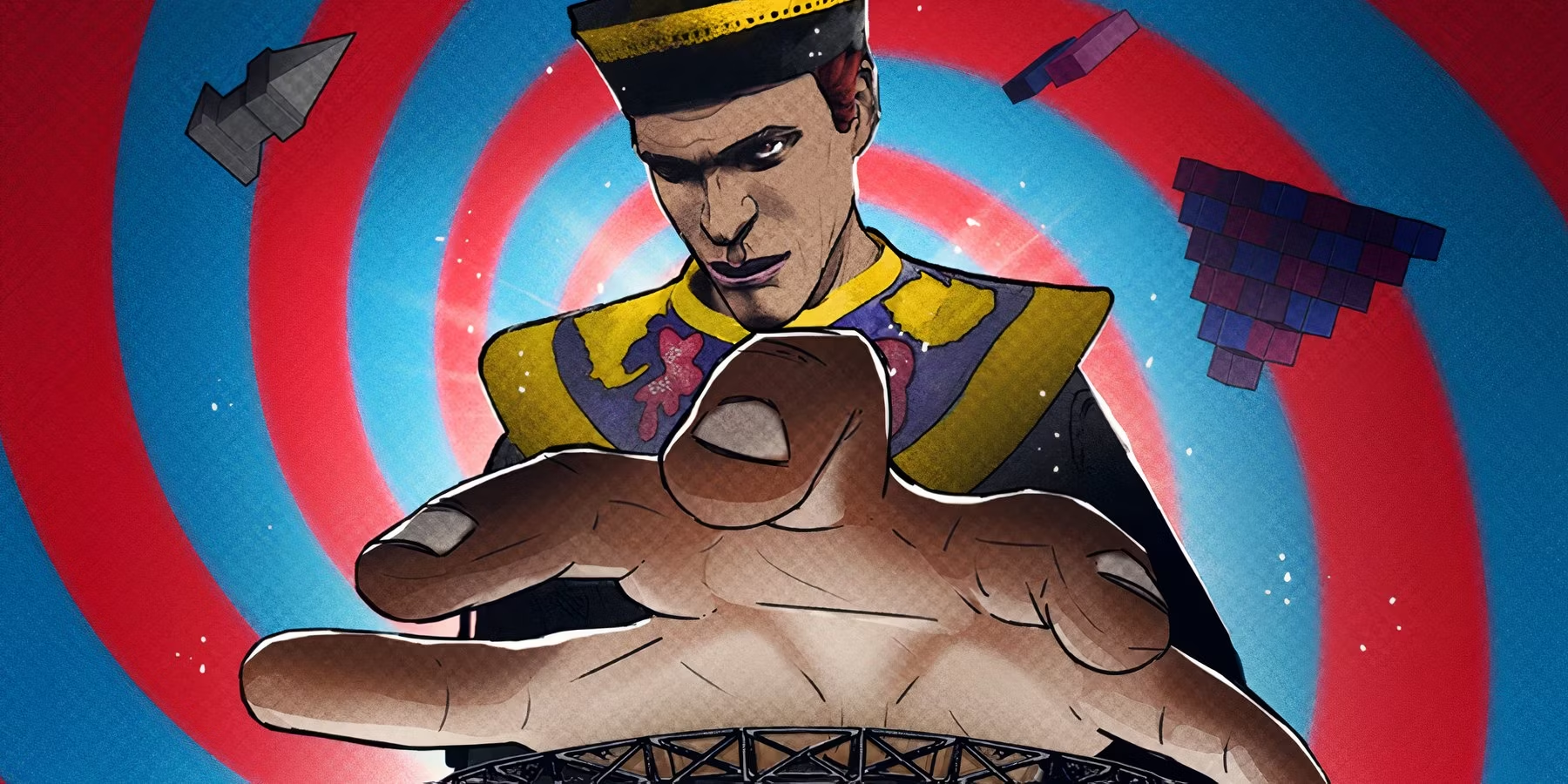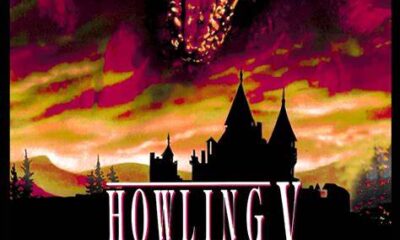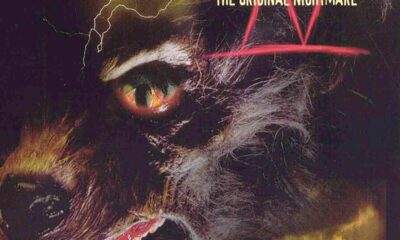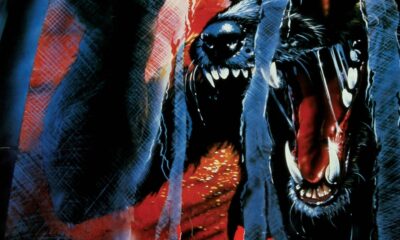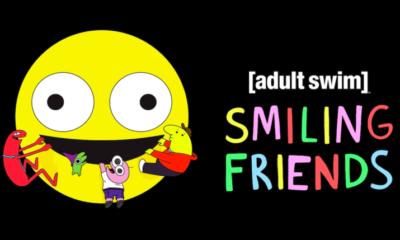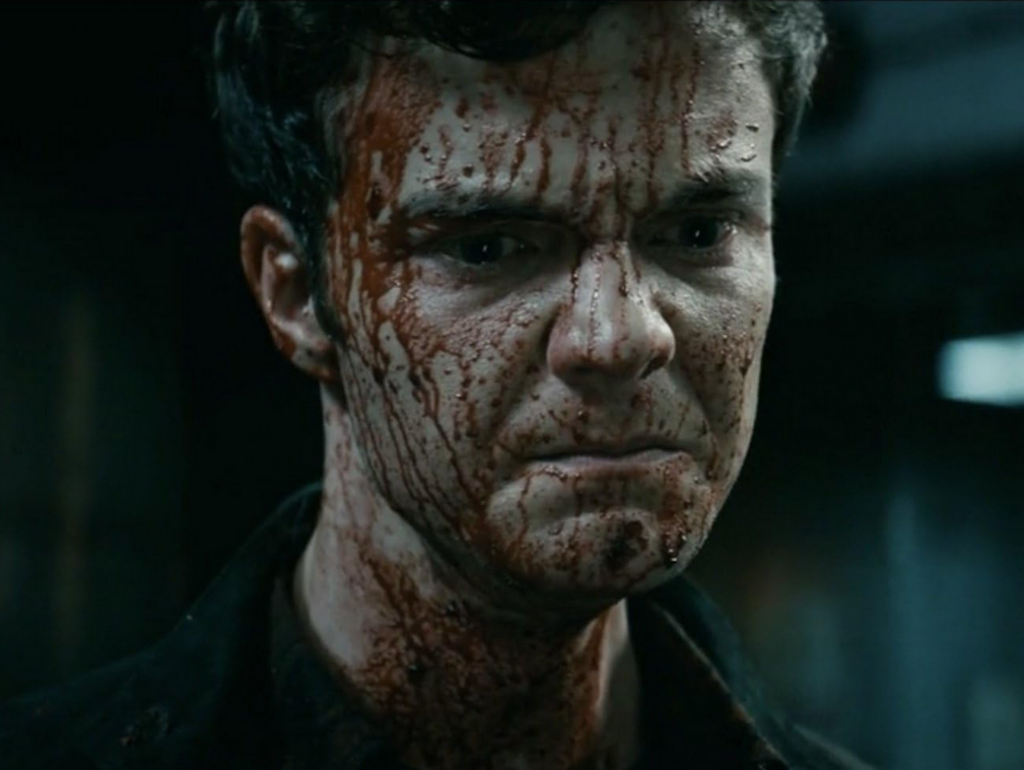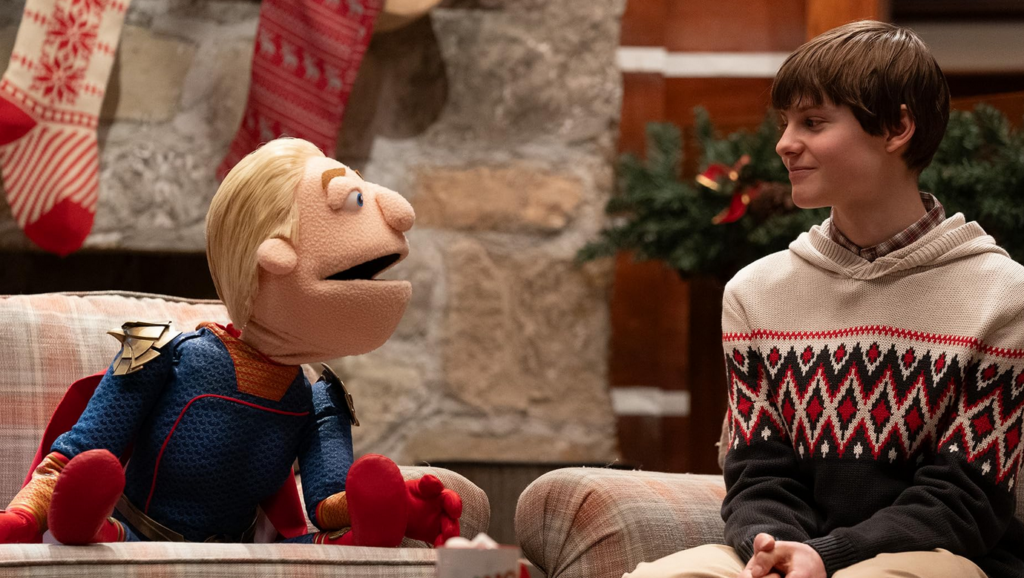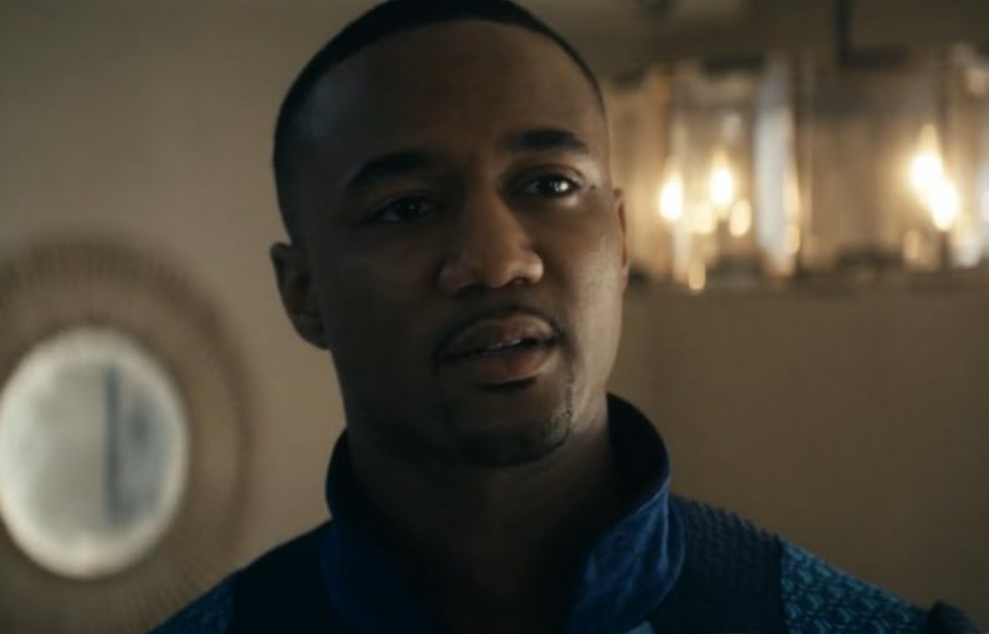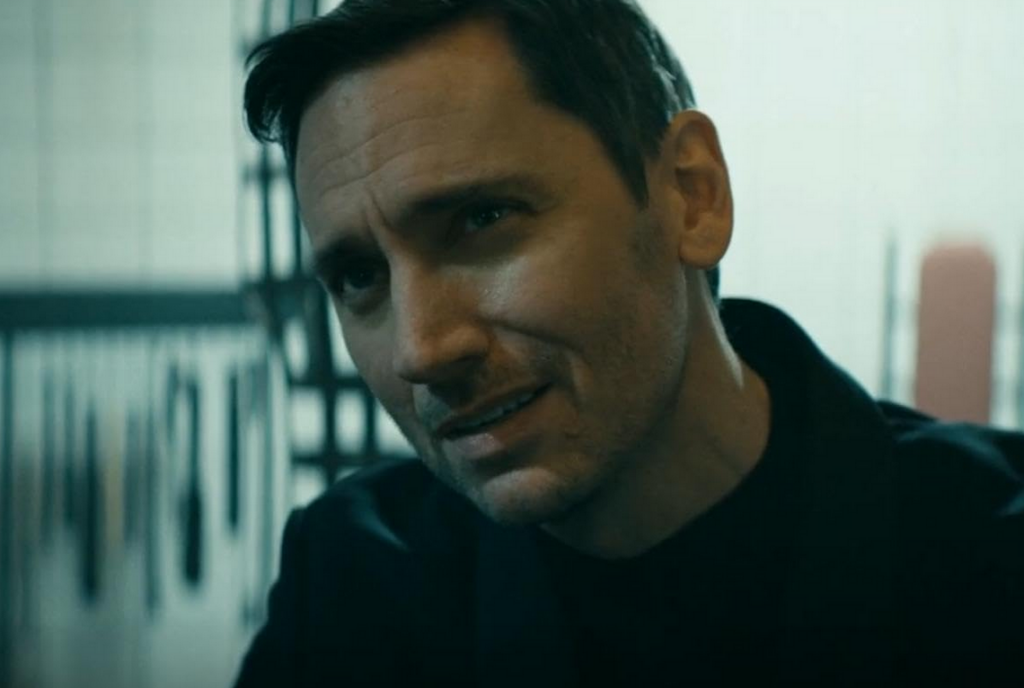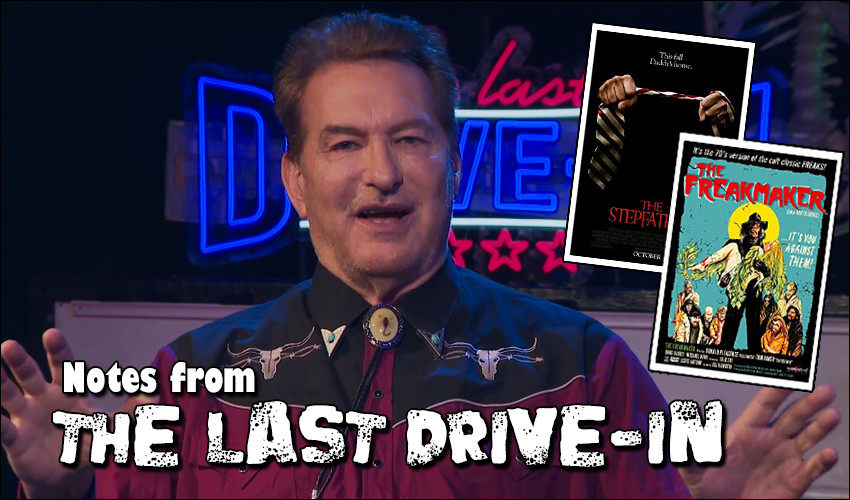
Notes from the Last Drive-In: S4E8 – ‘The Stepfather’ and ‘The Freakmaker’
More Videos
Published
2 years agoon
Welcome to Notes from the Last Drive-In, Haunted MTL’s review and recap series, tackling a “bad Daddy” night with Joe Bob Briggs and Darcy the Mail Girl. This week we cover The Last Drive-In S4E8 featuring The Stepfather (1987) and The Freakmaker (1974). So how does Daddy’s night fare compare to Mommy’s night last week?
What delights and horrors were to be found on Shudder this past Friday, June 16th?
Again, Shudder. I IMPLORE you to give Joe Bob a show where he talks true crime.
Mutants everywhere would love it.#thelastdrivein @therealjoebob @kinky_horror @shudder #mutantfam— Haunted MTL 🏳️🌈 (@HauntedMTL) June 18, 2022
The Stepfather (1987)
The Stepfather is a 1987 psychological horror film that best matches the “Bad Daddy” vibe of the evening. Directed by Joseph Rubin, the film was written by Carolyn Lefcourt, Brian Farfield, and Donald E. Westlake, with Westlake taking screenplay duties. Patrick Moraz handles the film’s music, while John W. Lindley and George Bowers tackle cinematography and editing duties, respectively. The movie stars Terry O’Quinn, Jill Schoelen, Shelley Hack, and Stephen Shellen.
The Stepfather follows a serial killer, Henry Morrison (Terry O’Quinn), who takes on a new identity and family periodically, murdering them when he feels they have failed to live up to his ideals of a family. He ends up meeting with a widow, Susan Maine (Shelley Hack), and taking in her daughter, Stephanie (Jill Schoelen). Meanwhile, interested parties, including Henry’s brother-in-law from a previous victim, Jim (Stephen Shellen), threaten to unravel Henry’s whole scheme.
Look. All I am saying is that he has the quick costume and makeup skills of a Canadian sketch comic.#thelastdrivein @therealjoebob @kinky_horror @shudder #mutantfam— Haunted MTL 🏳️🌈 (@HauntedMTL) June 18, 2022
So, how does this “Bad Daddy” movie fare? As a whole, the movie is competent but doesn’t exactly stand out. The film has become a cult classic, but that is mainly on the back of Terry O’Quinn, the only actor in the film given a compelling character. O’Quinn is fantastic as Henry, tapping into menace, rage, and Conservative-Christian geniality within an instant, sometimes within the same scene. Though he is not officially the lead of the movie, O’Quinn is pretty much the lead by having a real presence. Though many talented people are involved at all production levels here, it seems like the only person who came out of The Stepfather with something to be genuinely proud of is the future John Locke from Lost.
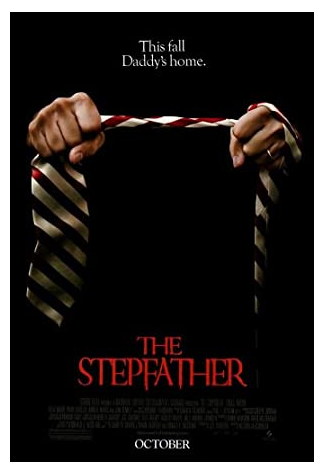
Jill Schoelen is a picture-perfect scream queen, equally beautiful and strong, but she has little to do in the film, nor do we even find a reason to root for her. Her early anxiety surrounding the new father figure makes sense, only to be seemingly abandoned partially into the third act, where it comes out again. I don’t get a real depth from her performance. Nor do I get that from Shelley Hack, either. It’s unusual how two strong actresses offer little in this movie. Jim Ogilvie’s manic performance is interesting but feels out of sync with O’Quinn’s “Bad Daddy” and ends up puzzling by the film’s end.
The writing isn’t great. The film itself doesn’t sell the sense of menace all that well, and any tension we may feel is because of the acting choices instead of story beats and scenes meant to create depth. Only two moments struck me as surprising. One was a murder with a wooden beam sold mainly by an explosively violent performance. The other was the hilarious frankness by which one plotline, woven through the entire film, is resolved in seconds. The latter was an unintended result, but I think it is indicative of some of the storytelling problems within the story. A lengthy sequence illustrates the process of preparing for murder and skipping out for a new town, but it just takes up so much of the runtime that could have helped develop other characters.
Technically speaking, this film isn’t overly impressive. I think the cinematography is suitable but only does something special in the third act featuring a long-held shot where a character gets uncomfortably close to breaking the fourth wall. The editing is serviceable as well. I have no real complaints, but I did not feel particularly wowed by any directorial choices. The music was a downside to the film; however, often grating and inconsistent with the film’s tone, the juxtaposition rarely worked. There were some rare instances when it did, but not nearly enough.
Joe-Bobservations on The Stepfather
One of the more entertaining host segments of the night was Joe Bob dipping back into the injustices of childhood, discussing the cynical world of the newspaper delivery boy. Inspired by the idyllic streets shown in the film, Joe Bob spoke at length about the scam that was the paperboy job, and we even learn that he was a paperboy as a child. It is a hilarious sequence, and you get the sense that he is still pretty heated about it today.
The big topic, beyond the background of the film and cast, which is all very interesting, was the discussion of the true-crime story that inspired the film. The murders of John List are infamous for being some of the most significant and brutal family crimes in criminal history. In many ways, the brief summation of the tragic events by Joe Bob was even more compelling than the movie that pulled from the actual murders. It shows that Joe Bob and his interest in true crime is something that Shudder would be wise to tap into for a documentary series.
Joe Bob made much hay about the exploitation background of Joe Rubin, but the real story was, unsurprisingly, about how good Terry O’Quinn is in the film. His audition was supposedly fantastic and chilling, and I would have loved to have seen that.
Final Thoughts on The Stepfather
The Stepfather is one of the more below-average drive-in movies we’ve had on the show, but that isn’t entirely bad. However, most of my enjoyment came from the wrappings of The Last Drive-In as opposed to the movie for the night’s first half. With only one character with any real agency or interest, mediocre production values, and some comically puzzling writing choices, I don’t think I could recommend much with The Stepfather beyond “see it once.” It was not just a “Bad Daddy” movie; it was also just bad.
Joe Bob Briggs gave The Stepfather 3 out of 4 stars. I give The Stepfather 2 and 1/2 out of 5 Cthulhus.

Best Line: “Wait a minute, who am I here?” – Henry/Jerry, seconds before disaster
The Freakmaker (1974)
The Freakmaker, sometimes known as The Mutations, is a seldom mentioned 1974 science horror film with an unusual pedigree and excellent, notable cast that ends up doing little to salvage this B-picture. It is a curious artifact of 1974 that, while novel, doesn’t prove compelling. Yet, Joe Bob Briggs does have his fascination for this weird little movie, but I doubt the Mutant Fam will take after it as well as they did with The Legend of Boggy Creek.
The film was directed by legendary cinematographer Jack Cardiff, who strangely hands the cinematography duties to Paul Beeson. The film was written by Edward Mann and Robert D. Weinbach, the latter who served as a producer. John Trumper steps in as editor, while the basic is handled by Basil Kirchin and an uncredited Jack Nathan. The film stars Donald Pleasance, Tom Baker, Brad Harris, Julie Ege, Michael Dunn, and Jill Haworth. The film also features a cadre of professional circus Freaks who lend their talents and authenticity to the sideshow setting for part of the film, including Willy “Popeye” Ingram, Esther “Alligator Girl” Blackmon, Hugh “Pretzel Boy” Baily, and Felix “Frog Boy” Duarte.
The Freakmaker features a group of students (Julie Ege, Jill Haworth, Scott Antony) and a visiting scholar, Brian (Brad Harris), who find themselves in the experiments of Dr. Nolter (Donald Pleasance) and his deformed assistant Lynch (Tom Baker). The two create genetic mutants combining human and plant characteristics, pawning off the failed results to a local Freakshow. Tensions arise between the experimenter, Nolter, the experimentees, and the Freaks, led by Burns (Michael Dunn), who rallies against the abuses of Lynch.
Stay strong mutants.#thelastdrivein @therealjoebob @kinky_horror @shudder #mutantfam pic.twitter.com/9LInODCume— Haunted MTL 🏳️🌈 (@HauntedMTL) June 18, 2022
The “Bad Daddy” theme is a bit looser with this film but still pretty apt. The movie itself, however, is a mess. The film struggles between predictable plotting, homages that border ripoffs to stronger films, and a mixed bag of performances. Furthermore, the direction is stilted, which is odd from the director of Sons and Lovers (1960).
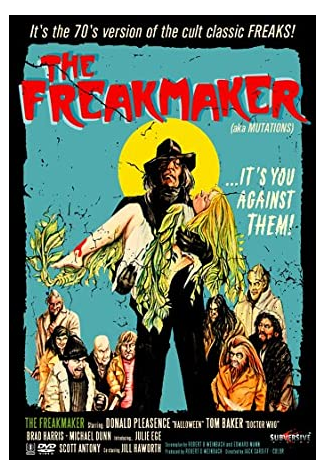
The story isn’t that good. Some ideas are interesting, but the way the concepts are delivered or developed is incredibly lacking. The film opens very slowly with what feels like a student film about the fungus life cycle as a metaphor as an understimulated Donald Pleasance recites memorized pseudoscientific lines. This is one of those rare instances where even I, a mighty reviewer who has managed to stay up for every movie shown on The Last Drive-In, felt my eyelids grow heavy. This is the most egregious example of the film’s ponderous, plodding, and talky nature.
With that being said, some of the ideas expressed in the dialogue are fascinating, but Donald Pleasance, usually an actor I am excited to see, doesn’t make it work. The cloning, genetic engineering, and the like theories are well ahead of their time here, even if they are couched in verbose nonsense. The film is at its best when it directly takes from Todd Browning’s Freaks (1932), but even then, it is a pale imitation. I’d rather be watching Freaks.
The other performances are fine, perhaps with Tom Baker having the most stirring of the bunch as a Freak who finds himself rejected in both worlds. He has a deeply sad scene with a sex worker that reveals his most significant insecurity, but it is a tantalizing tease and a more exciting story that does not get explored. Everyone else is just there to fill undercooked characters, and there is little agency for any of them to act upon. The ostensible protagonist accomplishes little, and the Freaks, fascinating that they are, only have a few moments before their sudden awkward action at the end of the film.
Even from a technical standpoint, the movie does not wow. I wasn’t overly taken with the direction from Jack Cardiff, nor were the editing and cinematography particularly interesting. The creature effects were decent enough, but ironically they looked to be on par with something in an episode of Dr. Who.
Joe-Bobservations on The Freakmaker
What became readily apparent as the film started is that Joe Bob has a soft spot for The Freakmaker. I can see why, too. Even if the movie isn’t the best I have seen on the show, it is a solid drive-in movie because it hits all the marks for Blood, Breasts, and Beasts. A lot of the apparent love for the film from our favorite horror host seems to originate with his interest in the subject matter of the Freakshow. During his host segments, he spent a lot of time talking about the people he interviewed and his love of the classic Freakshow. He also brought up an important point: if we are supposed to be body positive, is it fair to remove their opportunities for work?
Between Joe Bob’s discussions of the history of the Freakshow and the people who made them possible and his exciting stories about the cast and crew, there was also a hilarious moment of self-awareness as he just could not stop talking. It was charming to see Joe Bob break during one host segment, rattling off factoid after factoid, much to the chagrin of director Austin Jennings. I didn’t laugh quite as hard as the overly long Drive-In total for The Freakmaker, but it was a hilarious moment. Maybe the best part of the “Bad Daddy” evening.
Final Thoughts on The Freakmaker
I wish I could have enjoyed The Freakmaker more. It’s a strange little “Bad Daddy” movie, and had there been a bit more passion for the project across the board, I feel something fun could have really been found. Between a weak story, some overly-on-the-nose homages to Todd Browning’s Freaks, and curiously lifeless performances, there isn’t much to The Freakmaker that I enjoyed. I see the sketches of what I feel might work as a better film, but that’s not the point of this review.
Joe Bob Briggs gave The Freakmaker 3 out of 4 Stars. I can only give The Freakmaker 2 out of 5 Cthulhus.

Best Line: “You’re a pretty one though, aren’t you. Look, spend a little extra, and I’ll be extra nice to you. Or shall I give it to you straight? Short and sweet. Two pounds.” – An intensely affordable sexworker to Lynch
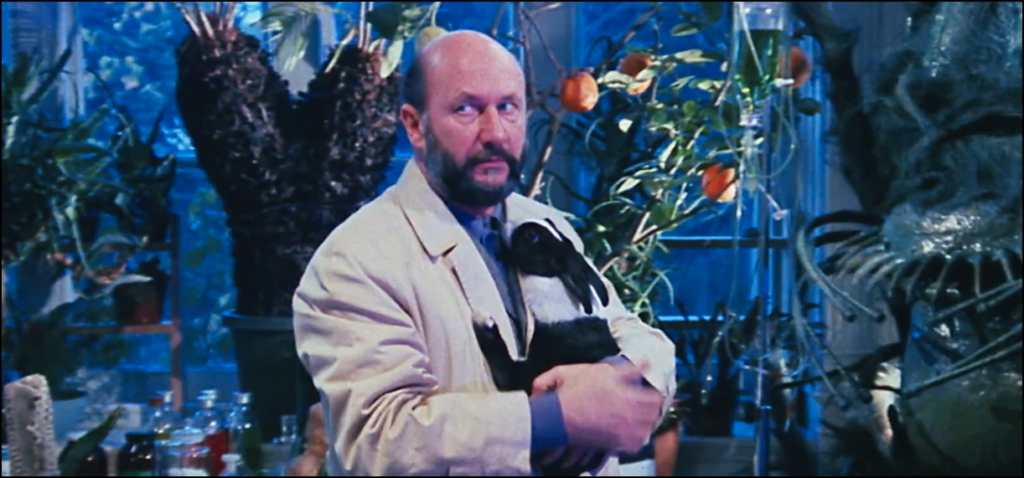
Haunted MTL Drive-In Totals
As usual, we have the official Drive-In Totals direct from Shudder. Tweet #2 is particularly intense!
"Multiple Staircase-Tumbling?" You know the totals are special when we need to cut to a @kinky_horror reaction shot in the middle! #TheLastDriveIn pic.twitter.com/JUj0hRV22p— Shudder (@Shudder) June 18, 2022
When will they learn? #TheLastDriveIn pic.twitter.com/UHEEZVn5ZI— Shudder (@Shudder) June 18, 2022
As for our Drive-In Totals for the show, we have:
- 2 “Bad Daddy” Movies
- 52 Weeks of Movies
- 65 Years of Father’s Day Legislation
- 12 Year Production
- Overly Involved Psychologist
- Assault and Daddery
- Holiday Ranting
- Evidence Dumping
- Childhood Trauma Regressing
- Gratuitous Bathing
- Plate Kicking
- Gratuitous Lifetime Movie of the Week Musical Score
- Gratuitous Fu Description Fu
- Leaf Fu
- 2×4 Fu
- Killer Quip Fu
- Clipboard Fu
- Freak Fu
- Reverse Time-lapse Fu
- Corpse Rolls
- Darcy Cosplay: Genderbend Stepdad
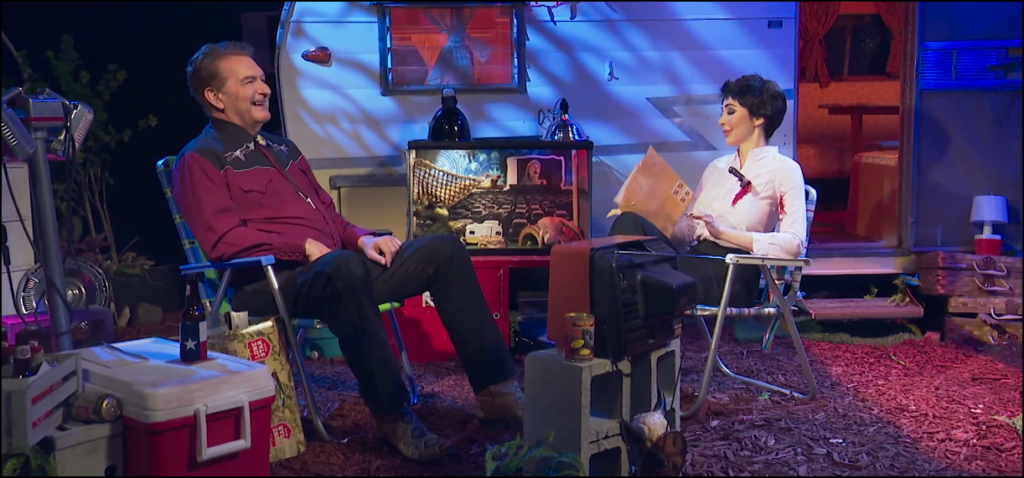
Episode Score for the Last Drive-In: S4E8 – The Stepfather and The Freakmaker
It was a night for the “Bad Daddy” at The Last Drive-In. But how was S4E8, featuring The Stepfather and The Freakmaster, as a whole? Not great, if I am being honest. It was still an enjoyable night, but the films took a sledghammer to the overall evening. The theme felt appropriate, and the film choices made sense, for the most part, but the quality of the films was a real sticking point for me. I guess I am glad I’ve seen them at least once in my life. I don’t think I’ll be seeking them out again.
With that said, however, the show itself put together by the cast and crew of The Last Drive-In was a quality one. The “Bad Daddy” theme introduced some interesting discussion topics, even if those topics were more interesting than the films themselves.
I would give this episode of The Last Drive-In 3 1/2 out of 5 Cthulhus.

And with that, we are done for the week. What did you think of the movies? Did you have a favorite? Will you ever watch them again? Let us know in the comments. We’d love to hear your thoughts. “Do you have any “Bad Daddy” film recommendations?
Please join us on Twitter next Friday as we live-tweet with the rest of the Mutant Fam during The Last Drive-In with Joe Bob Briggs.
Nothing sounds more Russian than a dead baby museum.#thelastdrivein @therealjoebob @kinky_horror @shudder #mutantfam— Haunted MTL 🏳️🌈 (@HauntedMTL) June 18, 2022
Want more of The Stepfather? (Sponsored)
Add The Stepfather to your collection by picking up a Blu-ray using our Amazon sponsored link.
David Davis is a writer, cartoonist, and educator in Southern California with an M.A. in literature and writing studies.

You may like
We have come now to the finale of season four of The Boys. And while it didn’t have the literal blood fireworks I wanted, someone did get ripped in half in the air. So, that’s pretty close.
As a note, I will try to avoid spoilers as much as possible. This ending was a hell of a gut punch that should be experienced as blindly as possible. That being said, I will not be able to avoid spoilers and still give a full legitimate review. Proceed at your own risk.
The story
The main storyline for this episode is the attempted assassination of President-Elect Robert Singer. The Boys join forces with the Secret Service to protect him. But, as we learned last episode, Annie has been replaced with a shapeshifter. A shapeshifter that was welcome not just into Hughie’s anus, but into the protective bunker in which the President-Elect is hiding.
What worked
The first thing I want to discuss about this episode is the ending. But we need to do this carefully.
The important thing here is that the ending breaks your heart on so many levels. So many terrible things are happening to characters that it’s almost hard to keep track. And each moment is significant to each character.
I cannot give a specific example. But no matter who your favorite character is, you’re going to weep for them.
Unless your favorite character is Sage. And this is the next thing that made this episode so fantastic.
I don’t think I’m spoiling anything to say that Sage’s plans worked out exactly as she wanted them to. And she got exactly what she wanted.
What she wanted wasn’t power. It wasn’t money or fame or vengeance. It wasn’t to win the love of anyone. She just wanted to see if she could do it.
That is a terrific, terrifying motivation! Because all she wants is to play a massive game of chess with people as pieces. She doesn’t care about anyone. She just wants to see how many people she can manipulate. She just wants to set things on fire to see if she can.
Fantastic. A plus villain work.
The next thing I want to discuss is a cornerstone of the whole series.
The morality of The Boys shifts through the series. While it’s very much a battle to save the world from overpowered super monsters, it’s also a battle for the souls of our real heroes. And in that battle, there are two warring factors. We have Hughie, always trying to bring everyone up to a better level. And we have Butcher, who has no problem at all hitting rock bottom with a shovel in hand to do some more digging.
In this episode, we saw almost every member of The Boys challenged. Will they rise to their higher angels, or sink with their demons?
On a similar note, I am so glad that the writers kind of addressed my issues with Annie. They did this by having the shapeshifter get right into her face and accuse her of thinking that she’s better than everyone.
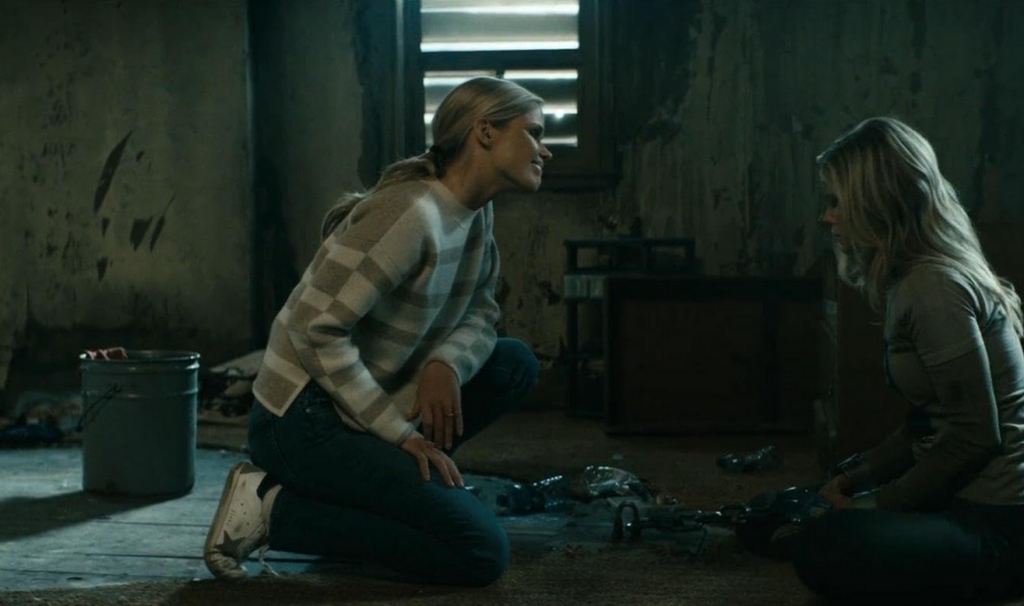
While that was devastating for the character, it was a little cathartic for those of us who felt like Annie was a little too good of a good guy.
What didn’t work
This is a small matter, but it is an issue that I want to address. After Annie finds out that Hughie slept with her doppelganger, she is furious at him.
In addition to this being unfair, it’s also a very cliche element to add. In almost every instance of a lookalike in fiction, there’s a moment where the love interest of the victim is fooled. Or almost fooled. And it’s always the same fight. It’s just played out and predictable. I’m just glad that it didn’t last very long.
Now that we’ve come to the end of the season, I can officially say that it was amazing. The story was deep and rich. The special effects were a stomach-turning good time. The character development was spot-on and satisfying. And, of course, it left me just about gagging to see what happens next. Unfortunately, it looks like we’ll have a bit of a wait. Because as of right now, the fifth season isn’t expected until 2026.

We’ve reached the second to last episode of The Boys, season four. And, as is appropriate for the penultimate episode of any show, things have to get a lot worse before they can get better.
Let’s discuss.
The story
Christmas is coming, and the whole world is getting ready. Ryan, despite being very clear that he didn’t want to appear on any TV shows or movies, has been strong-armed into participating in a Vought puppet Christmas special. He draws the line, though, when asked to sing about turning one’s parents in if they start talking about woke things.
Meanwhile, The Boys are trying to keep each other together. Butcher decides to take Sameer to the rest of the team. He also gets Frenchie out of prison, hoping they can make the Sup virus necessary to finally take down Homelander. Instead, this decision means disaster for one member of the team.
What worked
I first want to talk about Ryan’s speech near the end of the episode. Because it was exactly the moral of this whole story.
Ryan’s dad is a monster. His stepdad is also kind of a monster. But Ryan is a good kid. He cares about people, about family. And while he loves Homelander and Butcher, he doesn’t want to be like them.
Even better, this speech sounded like something a kid would say. Ryan didn’t open his mouth and start sounding like a college student all of a sudden. He sounds like a kid who misses his mom and wants to live up to the good standards she set for him. And I think that’s terrific.
Speaking of Homelander, he shot himself in the foot in this episode. I said earlier in the season that his hubris was going to be his downfall, and I was right. Without Sage, he just has the same weaknesses he’s always had. He’s going to fail because he just isn’t clever enough or patient enough to succeed.
Without Sage, I think a win is in the bag for The Boys. This isn’t to say that Homelander by himself isn’t dangerous. It’s just that he’s more like a wildfire than a controlled burn. He’s going to cause a lot of damage, but not get anything he wants out of it.
More’s the pity for him and everyone else who has to share his world.
Finally, I am thrilled with A-Train’s redemption story. I love that he wants to be a good person not to save himself, but to be a good person. His honest, pure and warm reaction to that little kid smiling at him in the last episode was heartwarming. It changed him in a moment, bringing to light a goodness that he’s been keeping under wraps for a long time.
This, along with Ryan’s courageous speech, proves once again what The Boys does so well. Yes, it’s gruesome. Yes, there’s blood and balls and batshit events. Yes, someone occasionally gets ripped in half. But there is a true human goodness in the story. One that we catch glimpses of. There are good people among the monsters. There is hope for redemption.
What didn’t work
Of course, so few things in this life are perfect, and this episode was no exception. For instance, I was irritated by the insinuation that Butcher cheated on his wife.
That just doesn’t make any sense. We’ve seen flashbacks of Billy and Becca. They were happy. He was happy. He was head over heels for her. And I don’t think it’s realistic or necessary for the character to throw in that he cheated. It does nothing to add to the story, it’s just a weird and offputting moment.
Doesn’t Butcher have enough to hate about himself? Can’t we just give him that at least he was a good husband?
Finally, I kind of hate that we ended up with Annie being caught. It’s just cliche, which is something I don’t normally say about this show. It feels lazy unless they do something very clever with it in the last episode. Which, I suppose, they might.
Next up is the season finale. And with this season being as insane as it has been, I’m expecting nothing short of bloody fireworks. And I mean literal fireworks of blood. At this point, would it surprise anyone?
 (4 / 5)
(4 / 5)
Episode six of The Boys was one of the most surprising episodes of the series so far. And that is certainly saying something. Because this season has so far been bonkers.
The story
Our episode today revolves around a party at Tek Knight’s lovely mansion. Yes, it does look just like Wayne Manor.
The Boys know that Tek Knight is working with Homelander on something, but they don’t know the details. So they decide to send Hughie in to bug the mansion.
Because that’s worked so well the other two times he’s tried to hide a bug!
It should surprise no one that this time goes no better. Hughie finds himself in Tek Knight’s basement. And by that I mean his BDSM dungeon.
Meanwhile, the party upstairs is no less disturbing. Homelander and Sage are trying to convince some well-off political donors to support a cue after the election. When pressed for details on his plan, Homelander freezes. He looks to Sage for help, but she wasn’t recently shot in the head and still in the junk food stage of her healing.
Fortunately, or unfortunately depending on your point of view, Neuman jumps in and saves the day.
What works
If I’m going to say one thing about this episode, it didn’t hold back at all. I didn’t expect them to show a character masturbating, sitting their bare behind on a cake, or spraying breastmilk into someone’s face. But every time I thought they’d cut the scene and let something be left to our imagination, they did not do that.
This is a dangerous move. Whenever you show the monster, you run the risk of them not being scary enough, or gross enough. As Stephen King says in Danse Macabre, to leave this sort of thing to the imagination if the reader makes things so much worse. So when they finally experience the monster, they might say that this isn’t so bad. It could have been so much worse.
But in this case, they managed to avoid that by making the scenes, especially the ones in Tek Knight’s dungeon, so much worse than I imagined it would be.
What doesn’t work
While this was a deeply disturbing episode in many ways, there was one really innocent and sweet moment.
And yes, I did have a problem with it.
Confronted by Firecracker, Annie decides to apologize for spreading rumors about her when they were kids. She tells her that she is genuinely sorry.
And I believe her. I don’t think Firecracker did, but I did.
So why is this an issue? Because I’m starting to think that Annie is maybe too nice. She is too good.
I know that Annie is our good guy. But every one of the other good guys has flaws. Hughie let his pride get in the way and took Temp V. MM hid himself from his daughter instead of teaching her to work through her emotions. Kimiko is far too closed off and has a hard time trusting others. Frenchie numbs himself with drugs. And well, what hasn’t Butcher done?
It is unrealistic that Annie is just so kind and so flawless. We all have shadows in our personalities. We all have weaknesses, we all mess up. We all do things we wish we could take back. The fact that Annie doesn’t seem to have anything like that is not just unrealistic. It’s infantilizing.
Give her some deep dark secrets. Give her something real to regret.
This was a shocking episode, even for someone fairly jaded like me. I wasn’t expecting the sort of weird sexual depravity, though I guess maybe I should have seen it coming. It was dark, upsetting, tense, and funny as hell. And with just two episodes left in the season, I can imagine the stakes are only going to get higher.
 (4 / 5)
(4 / 5)
By the way, if you like my writing you can get my short story, Man In The Woods, on Smashwords and Amazon.

